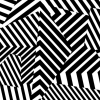Problem(s) creating a single object with multiple components and surfaces
 Dazzle
Posts: 45
Dazzle
Posts: 45
As my first Daz project, I set myself a challenge to build a shower cubicle prop, with the aim of teaching myself how to handle things like poseable objects (door, showerhead), wet surfaces (walls, glass, skin, hair), animation (water flow rate), lighting under various conditions, etc, etc.
However, I have fallen at the first hurdle. I've had to build the shower cubicle as a group of independent objects (tray, hairtrap, shower head, tiled walls, glass doors, runners, ceiling light, etc) because I can't find a way to assemble them into a single object without losing the textures I apply to each component. I created the parts in Hexagon, exported them individually as OBJ, imported them into Daz Studio, arranged them in 3D space, and parented them to a ShowerCubicle object. Everything looks OK, but deep down I know I haven't done the job properly. Can anyone walk me through the process, or point me to a link that explains what I should be doing?


Comments
Making the uvmaps is the 'last' action done, i.e. after "merging" separate objects together in Hexagon.
There is a trick to get Hexagon to put several groups together 'as one' ... in Hexagon, rename every object group that is to be unified, EXACTLY the same. Then select all of those and export them as .obj. Open another instance of Hexagon [keeping the first instance open if need to make corrections etc.] and import that new .obj. It should arrive as one piece, textures intact. Check that the materials and shading domains bear the correct names and carry on.
Yet this is exactly how I prefer to do things in a less painful CAD program. The reason is that you can then apply specific shaders to each item. Glass for the doors, metal, ceramic, etc. If you atlas it into one UV model your stuck using the same shader for everything. Well you could atlas and still seperat them, but then each items texture maps will be significantly smaller as they all have to shrink down to fit in the map. Well it could be a huge map but still. I might like a real close up shot of a person rubbing their body with a bar of soap and want the best quality out of that soap's textures.
Also keep in mind the door and facet knobs as seperate items you can move them around independantly.
So IMO you are absolutely on the right track!
Catherine, that works - thank you! Your explanation about renaming was the key thing. Having read similar advice elsewhere, I've been interpreting it as keeping consistency between names for entities in Daz and in Hexagon (so, 'door' & 'door', 'tray' & 'tray' but NOT 'ShowerHead' & 'shower_head'). Your advice about the second instance of Hexagon was just a check, right? - it doesn't need to become part of my routine, yes?
Would I be right in thinking that I should save prop X as X.hxn before the renaming step, to keep open the option of doing further tinkering? I don't see an easy way to import X.obj back into Hexagon as the starting point for a further round of changes.
Charles, thank also for your reply. I haven't come across 'atlas' as a verb before, but I infer it has something to do with texture maps and with unfolding complex objects, in which case I'm not there yet, although it's on my study list. At present all my materials are freebies for ceramic, metal, wood and plastic surfaces.